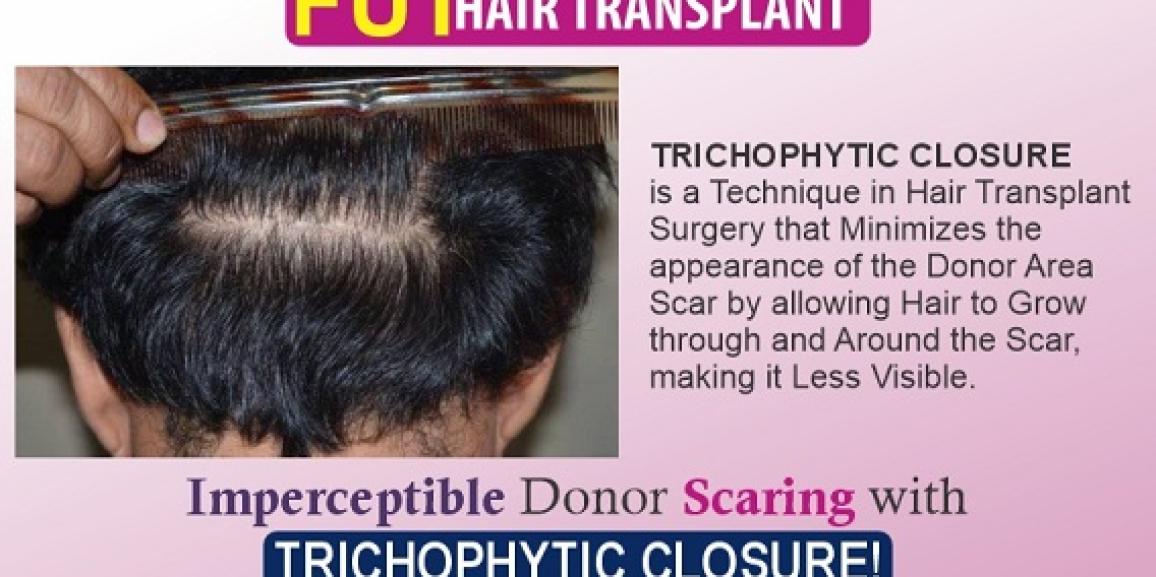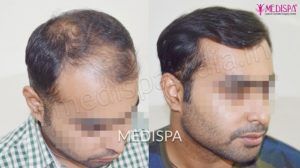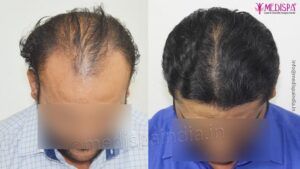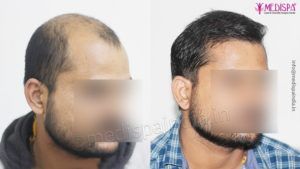
Cosmetic procedures are widely accepted in the modern world because aesthetic awareness and importance have grown. Now, it’s not just important for you personally; your professional career also depends on your ability to be vivacious and have a positive personality. Out of all cosmetic issues, hair loss has emerged as a serious problem because it can be extremely upsetting for the person experiencing it.
These days, hair loss is very common, possibly as a result of lifestyle changes, increased work stress, and environmental deterioration. Therefore, as people look for a long-term solution to these issues, hair restoration procedures are becoming increasingly popular.
People from all over the world search for hair transplant in Jaipur as a result of the widespread attention that hair transplant has received internationally. The outstanding hair transplant surgeons who have been working in the city for over ten years are credited with the industry’s success. The clinics in Pink City provide top-notch services with amazing outcomes. Since there are many options in the city and increased competition among clinics, the hair transplant cost in Jaipur has remained very low despite the higher quality of services.
More than 10000 patients who were suffering from hair loss were successfully treated at the Medispa hair transplant clinic, which has been offering top-notch hair transplants for more than a decade. We are one of the most well-known hair transplant clinics in the country and are well-known for our excellent results. We are at the top of the list for the nation and have India’s top hair transplant team.
Words don’t seem to do Dr. Suneet Soni’s expertise justice, but because of his outstanding abilities, celebrities refer to him as “the master of artistic skills.” Because he is endowed with exceptional artistic abilities, his hairline designing is distinctive.
Hair transplant techniques
Two fundamental techniques are employed during the hair transplant procedure, including:
- FUT hair transplant: To perform a FUT hair transplant, a thin strip of the donor area is excised and then further divided to harvest individual hair grafts. The donor area is then stitched back together after the hair grafts have been transplanted to the desired bald area. Due to its higher yield of hair grafts—between 3000 and 3500—this technique is recommended for high density hair transplants and cases of extensive baldness. The procedure also uses a very small area to harvest a large number of hair grafts, making it a good method for keeping the donor site for potential future sittings.
This technique had the drawback of leaving a linear scar at the donor site after healing, but thanks to an advanced method called “trichophytic closure,” this drawback has been overcome and the donor site can now be successfully healed with almost invisible scarring, just like with FUE hair transplant.
- FUE hair transplantation: Using a punch device, the hair grafts are individually removed from the donor area and then immediately transplanted to the desired bald area. This method, which is a blind extraction because it relies on assumptions to determine the angulations of the hair root, is prone to damaging the hair grafts. As the yield of hair follicular grafts is between 2000 and 2500 hair grafts, this technique is recommended for facial hair transplant and cases of initial hair loss.
How is the trichophytic closure carried out?
The trichophytic closure, which is also known as the linear scar revision approach, is best carried out by the deft hands of a highly qualified plastic surgeon.
A thin strip from the sides and back of the head is superficially excised during FUT hair transplantation. The donor area ends up with two skin edges that are closed for painless healing after the strip is used to harvest individual hair follicles by further dissecting it.
In a trichophytic closure, the skin edge is beveled on one side before being closely approximated for suturing. The wound closes with virtually undetectable scarring as the bevelled end overlaps and a better approximation is seen during closure. A further advantage of the technique is that hair growth can be seen over the scarred area as a result of overlapping.
The limitation of the FUT technique has been transformed into an advantage by this method because, first, the scar is virtually undetectable after trichophytic closure, and second, the hair growth over the scar further conceals it and ensures highly aesthetic results.
Benefits of trichophytic closure
The advantages of this method over the standard procedure are numerous and include:
- This is a camouflaging procedure that virtually eliminates the linear scar left by the FUT technique.
- Following a hair transplant, patients could continue wearing shorter hairstyles.
- Because it precisely closes the donor area, it assures highly aesthetic results.
- Gain more self-assurance because the hair transplant is undetectable.
The results of trichophytic closure combined with FUT technique heavily depend on the surgeon’s abilities, experience, and aesthetic sense. This method has been found to produce extraordinary results when used by qualified personnel.






